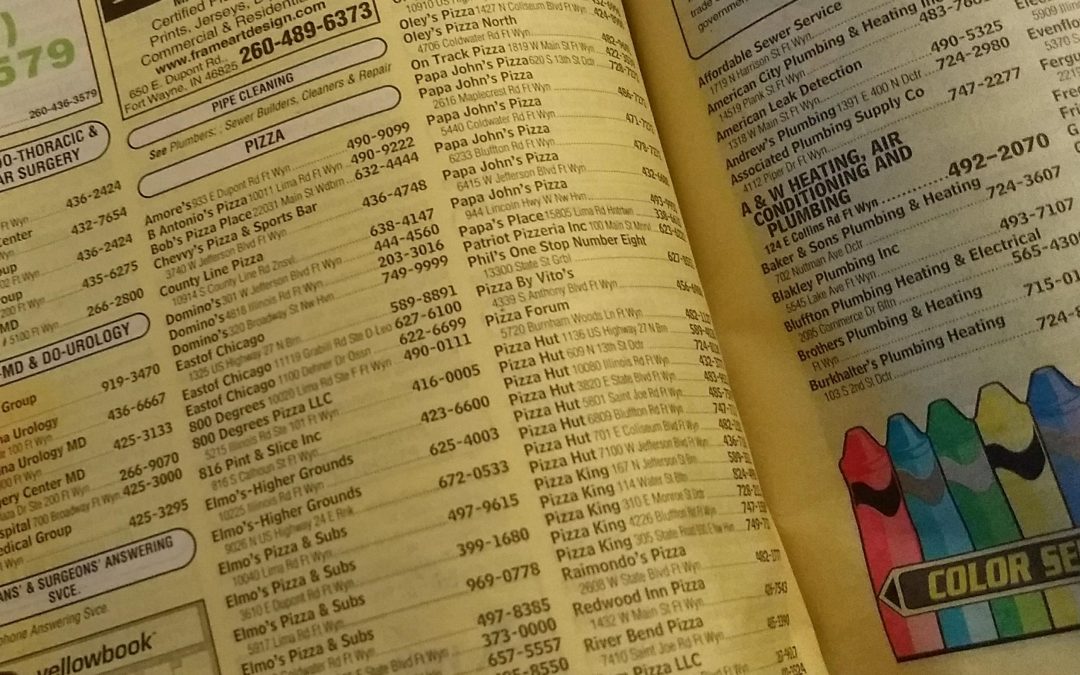
by Scott Howard | Jun 14, 2018 | Marketing and Advertising Insights, ScLoHo's Fort Wayne, The Not-So-Secret Writings of ScLoHo, Uncategorized, WOWO Fort Wayne Radio Advertising with Scott Howard
I offer both radio advertising services with WOWO radio in Fort Wayne, Indiana and digital marketing services via our Federated Digital Solutions division. But today, I’m going to break the hearts of my digital marketing friends with the declaration that: Radio Advertising is the Real SEO!
Every week I have someone tell me that they want to increase their Google rank, which means that they want to be at the top of the Search Engine Results Page when someone Googles their business category.
While that may be a worthy goal, I’m here to tell you, it’s kind of a stupid goal. I’ve been around the advertising world to remember when the printed yellow pages were still being used by consumers.
The Yellow Pages was what our parents and grandparents would use to find a phone number for a business before the internet made it obsolete. This annual publication would list businesses that bought ads in each category and in alphabetical order.
For example let’s say you want to order a pizza.

This is a real pizza from Acme’s FB page
If you don’t have the phone number memorized, ah yes, we used to memorize phone numbers, now I don’t even know my kids phone numbers. Anyway, if you wanted a pizza you got out the phone book and if you were not sure which pizza place to call, you’d look in the Yellow Pages under the category Pizza. That’s where all the pizza joints would be listed in alphabetical order, at least the ones that bought an ad in the phone book.
It was better to be named Acme Pizza than Zoli’s Pizza because Acme was in the front of the listings. Sort of like looking up Pizza on Google, Acme would automatically rank number one on page one . That is until someone opened up Ace Pizza. Because alphabetically Ace Pizza comes before Acme Pizza.
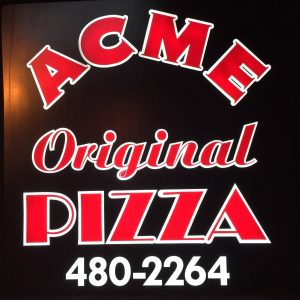
I’ve had pizza from the Acme
That’s how our parents would find the number or address to all kinds of places, the phone book, because they didn’t have the internet.
But you know what was even better than being found in the Yellow Pages with all the other Pizza shops?
Having your customers remember your pizza place so they could look in the white pages instead of the yellow pages. The white pages of the phone book listed everyone in alphabetical order instead of by business category. If my parents wanted a pizza from Zoli’s pizzeria, all they had to do was open the white pages of the phone book, flip to the Z’s and find Zoli’s.
How did businesses like Zoli’s become well known so that people would look for the number for Zoli’s Pizza and not any other pizza place? They developed Top Of Mind Awareness. Their customers knew that Zoli’s was where they wanted to order their pizza from and they did.
This Top Of Mind Awareness is a Human Relationship Principle that I talked about recently. We develop preferences and those preferences are on our short list of consideration. So when someone says, “let’s get a pizza!” we don’t have to wonder, “who can sell me a pizza? and start searching the yellow pages, or to move this scenario up to today, we don’t Google “Pizza”, we Google “Zoli’s”.
Top Of Mind Awareness can help set a business apart when we look online in other ways too.
Because sometimes we do Google “Pizza” and Google gives us about 10 results on the first page of results. Let’s say Zoli’s is on that first page, but they are number 7 and the first 6 listings are for places we either don’t like, have never had, or never heard of before. Top Of Mind Awareness will motivate us to call skip past those first 6 pizza joints and call Zoli’s because just like in the old phone book days, we know we are going to like a Zoli’s Pizza.
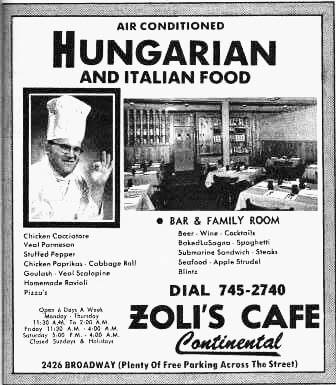
A very old ad for Zoli’s
So back to that statement, Radio Advertising is the Real SEO? How does that work? Radio ads can create Top Of Mind Awareness. Even when we are not thinking about pizza, when the radio station plays an ad for Zoli’s Pizza, we hear it and it reinforces the idea in our head, hearts and stomachs that the next time I want pizza, it’s going to be a Zoli’s Pizza.
I’m going to use a real life example, hamburgers. McDonald’s is the most recognized hamburger brand around the world because they continually advertise to keep that Top Of Mind Awareness going. You can buy a better burger and spend more money than McDonald’s, heck you may never eat at McDonald’s but they certainly have Top Of Mind Awareness, right?
15 years ago when businesses were jumping on the “I gotta have a website for my business” bandwagon, I helped several companies be found online by promoting their website in their radio ads. We still do it. Because it works.
When a business owner tells me that he gets all his customers from Google, we dig a little deeper and discover if they actually had Top Of Mind Awareness when his customers went online or are they just one in a thousand in the search results.
I can help you become the preferred choice for your customers, want my help? Let’s talk.
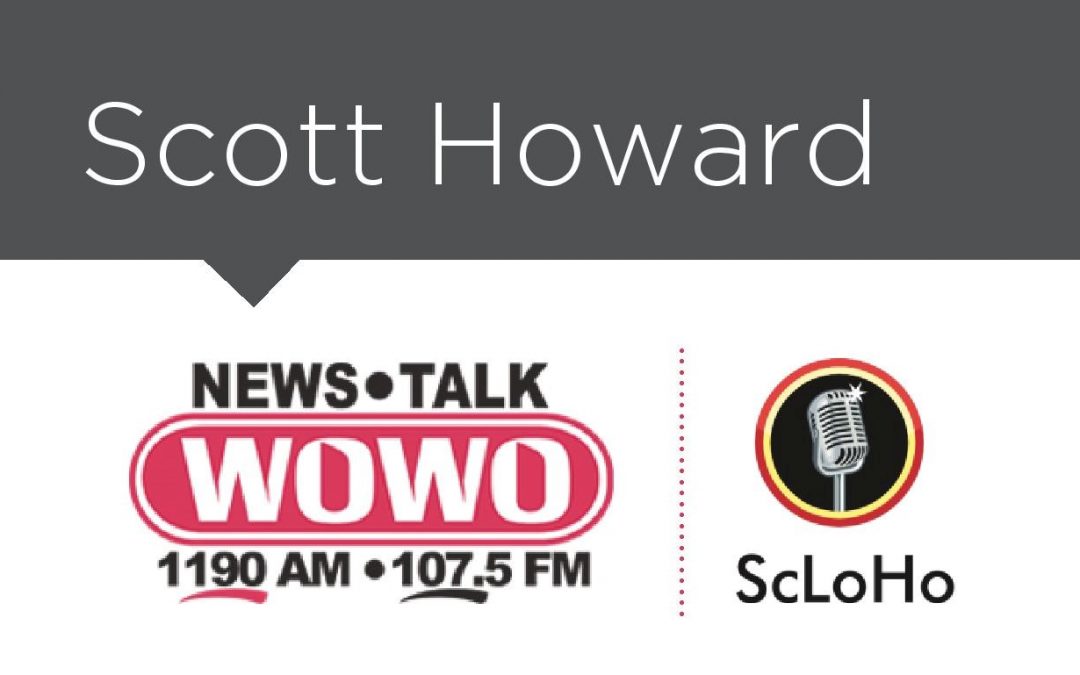
by Scott Howard | Jun 6, 2018 | Marketing and Advertising Insights, ScLoHo's Web World, The Not-So-Secret Writings of ScLoHo, WOWO Fort Wayne Radio Advertising with Scott Howard
This article is for the business owner who is regularly being asked to buy advertising and really needs a little help deciding what to do. (Or perhaps a LOT of help.)
Today, we are going to talk about the pros and cons of advertising agencies, advertising sales people and marketing consultants and what you really need for your business. There was a story in Mediapost that touched on this topic and we’re going to get to the heart of the matter for you.
Should You Hire An Advertising Specialist or Generalist?
You see I’m a bit of both. I’m a big picture marketing guy who has expertise in several specialties.
Start with the basics:
Why advertise? To attract and retain customers. It’s that simple.
Then why is it hard to pick what kind of advertising you and your business should be involved with?
Because there are so many options and all these advertising salespeople who tell you their advertising is the best, whether it’s true or not.
So I sell advertising, what makes me, Scott Howard different? Let’s start with a quote from one of my online profiles:
This is the Big Picture of Marketing, Advertising, and Media, down to the tiniest detail.
Combining the tools of today with the timeless, proven methods of the past and creating ideas that rely on honest, trustworthy human relationship principles.
This Big Picture concept is what makes me an advertising generalist. That’s also the term you could apply to most of the advertising agencies that offer a variety of services. But I’m not an ad agency and I have a unique perspective that’s different than most advertising generalists.
That’s also where the ScLoHo persona comes in. This unique perspective is that all of your marketing and advertising needs to be based on Human Relationship Principles or if they are not, you better have a very good reason why not.
Human Relationship Principles are the natural, organic ways we communicate with one another that promotes trust, and good positive feelings. You incorporate that into a marketing campaign successfully and your business will grow beyond what you could ever do with coupons and gimmicks.
I know how to do this because I’ve been a student of this for a few decades and there are hundreds of businesses in Metro Fort Wayne and Metro Detroit that were my real-life laboratories.
Along the way I also gathered intensive insider knowledge and wisdom regarding what could be called Advertising Specialties. These include:
- Print including newspaper, magazine and direct mail.
- Outdoor including the big billboards, the smaller signage, even the ads we see on city buses. Which brings me to …
- Vehicle wraps, promotional materials and company branded attire.
- Television advertising including cable TV.
- Social Media.
- Website design and structure.
- Search Engine Optimization and Search Engine Marketing.
- Email Marketing.
- Blogging, Vlogging and Podcasting
- and of course Radio Advertising.
Every one of these specialties I have direct experience in and have served on the board of directors for the local American Advertising Federation to enrich my knowledge and teach others. I have even taught branding at a local university, won awards from both my peers and from independent, impartial judging panels. I am not one to blow my own horn and say how great I am, that is out of character for me, but I really want you to know that since I made the transition from being a radio personality to an advertising and marketing specialist over 30 years ago, I have learned a bunch and am continuing to learn. All I want to do is help you with what I’ve learned.
Some of these Advertising Specialties I continue to do first hand and others I will either outsource, recommend others that I trust or at the very least serve as your marketing coach so that when someone tries to sell you their advertising specialty, you have an experienced professional that knows how it should be done and can help you in the process if it’s really something you should invest it. I, Scott Howard, work for WOWO Radio and we have a whole boatload of advertising and marketing solutions you can buy. The ScLoHo side of me helps you with the things I can’t sell you but can advise and guide you.
So back to my original question: Should You Hire An Advertising Specialist or Generalist? Why chose one or the other when you can have both in one person?
Let’s talk.
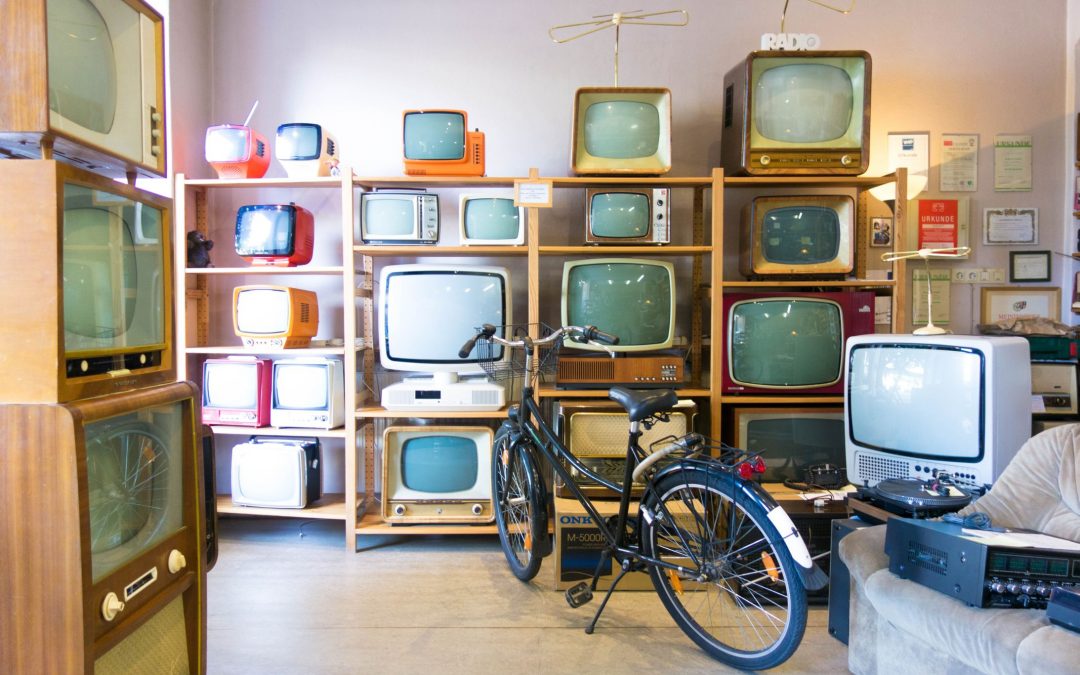
by Scott Howard | May 24, 2018 | Marketing and Advertising Insights, ScLoHo's Collective Wisdom, The Not-So-Secret Writings of ScLoHo, Uncategorized, WOWO Fort Wayne Radio Advertising with Scott Howard
As we head into the unofficial summer season of June, July and August, the three months between Memorial Day and Labor Day, I want to address a headline I saw again and give you an insiders perspective on The Decline of Mass Media.
Why talk about it now? Well, television viewing habits in years past were different during summer time, with the major networks showing summer reruns instead of new episodes. But hang on because I’m getting ahead of myself.
What is mass media anyway? Perhaps traditional media is a better term. Television, Radio, Newspapers and Magazines are the traditional media that have been the mainstay since the 1950’s and before.
Newspapers are continuing to struggle. Lay offs and shut downs have been occurring for nearly two decades, due to the rise of the internet. One story I read this month blamed the owners for cutting staffs.
The Denver Post cut the newsroom from 184 journalists to 99, according to the story. Other cuts at other newspapers were also harsh. 73 reporters down to 10 while another paper went 45 to 12 journalists. Locally in Fort Wayne, the afternoon paper ceased publication, and instead gets one sheet in the morning paper and an online edition. I saw friends of mine in the newspaper business in town leave either on their own or due to cutbacks. I was once tempted about 8 years ago to work for their online division but am grateful I stayed put.
The company I work, Federated Media sold the one newspaper they owned a couple years ago because it was nearly impossible to be profitable.
When I say the internet is the reason for the decline in print, it’s really a combination of things related to the internet.
Accessibility for one. 20 years ago most of us owned a desktop computer with a dial-up modem at home, if we had a home computer. 12 years ago laptops took over as the primary personal computer device. And did you realize that the first iPhone debuted in 2007, ushering in the smartphone revolution?
Online Content is the other contributing factor. No need to wait for the morning paper to check the weather or the score. Newspapers have tried to replace their dwindling subscriber numbers with paywall subscriptions, but the math doesn’t work. If you don’t have the readers, the advertisers will also go away and the decline has been going on for too long.
Declines in the magazine publishing industry are similar. What seems to have survived in print is specialized publications. Smaller but targeted readership than mass media.
Another way the internet has changed the media is the television industry. The New York Times featured a story that I read online about the future of broadcasting: Why Traditional TV Is in Trouble.
Here’s a few quotes:
Ratings are on the decline, especially among young people, some of whom don’t even own televisions. It’s hard to keep up with the many devices and apps people now use to watch shows. And there is a host of material from Silicon Valley that is competing for viewers’ attention, including Google’s YouTube, Facebook and Netflix. It all adds up to a precarious situation for broadcast TV.
Advertising on TV has long been the best way for marketers to reach a large number of people at one time. And it is still a formidable medium. But cracks are showing.
and:
The hottest shows on TV networks — which command the highest ad prices — are attracting older viewers, which is a challenge for brands that want to reach millennials and teens. For instance, this season’s top-rated show, the revival of “Roseanne,” has a median viewer age of 52.9 years. The network show with the lowest median age is “Riverdale” on the CW, at 37.2.
The TV networks will be able to survive by reinventing themselves much like radio stations did when television became a media force last century. But the local TV stations? My advice if you want to reach anyone younger than Baby Boomers, good luck. All of my kids are in their 30’s and none of them are watching broadcast TV, some don’t even own a television. They get their video content online. Even my wife and I watch just as much video content on something other than a TV or if we do, often it’s days later and the local ads are not even seen.

So what is taking the place of traditional broadcast TV as a mass media?
Netflix, Amazon Prime Video, YouTube, to name a few. Alternatives to cable like Sling, Hulu and Roku. These are all offering the best of both worlds for advertisers. You get to reach people watching video content but you get to target your ads to specific audiences, one of the technical marvels of the internet.
Here’s a quote from a newsletter I received from Google:
More than half of 18 to 49-year-olds in the U.S. either don’t watch a lot of TV or do not subscribe to TV. But that doesn’t mean TV content and TV screens are on their way out. In fact, the TV screen is the fastest growing screen for YouTube content, with 70% growth in the last two years.
Let me address the radio broadcasting industry too. It was the first broadcast mass media and WOWO radio, the station I work for is over 90 years old. There are two categories of traditional broadcast radio stations these days, and I’m not talking about AM and FM. The two categories I am referring to are talk based programming and music based programming.
Radio broadcasting started out with network radio shows from NBC, CBS, ABC and the Mutual Broadcasting System and eventually they evolved to what we have today.
In Fort Wayne, Indiana, there are 37 radio stations within close listening range. Some are duplicates of the same programming on different signals, like WOWO 1190 AM is the same as WOWO 107.5 FM, so let’s say there are 25 separate and individual choices. This is also a way of targeting your advertising. The best local radio stations keep an emphasis on local content, stuff you can’t get by listening to Spotify or Pandora.
Federated Media has 6 stations in Fort Wayne, four are music based, two are talk. I work for the talk stations, WOWO and our ESPN affiliated station. Both offer a combination of local and national programs. There are specific characteristics of WOWO listeners that help me determine if advertising on WOWO would be a good idea. Want to reach grown-ups? Let’s talk. Want to reach teenagers? I’ll connect you with someone who works for one of our music stations.
Not all radio stations and radio broadcasting companies are the same. Overall radio listenership has remained pretty steady for the past decade. Over 90% of everyone age 12 and older listens every week. However smart radio stations and companies are staying ahead of the trends that we see going on around us.
For years, radio stations like WOWO offered a way for you to listen via the internet. Go to WOWO.com and click on the listen now tab and you can stream WOWO on your computer. There are plenty of apps that offer access to radio stations like WOWO, and some people listen to WOWO via the WOWO app itself.
2018 however is the break thru year for Alexa and Google Home smart speaker systems. We are seeing a resurgence in radio listening simply by telling the smart speakers to play WOWO and poof, there’s Pat Miller in the afternoon or Charly Butcher in the morning, in your kitchen, just like 40 years ago when I was a kid and my parents had clock radios in their house.
One last way radio stations like WOWO are staying on top of the trends is podcasting. WOWO and our other Federated Media stations share both content from our live shows online in podcast form, but also we have some podcast only shows that are available via iTunes or what ever your favorite podcasting player is. Podcasting is huge and we can connect businesses to podcast listeners too.
The title of this today was The Decline Of Mass Media. As I’ve laid out what’s going on in print and broadcasting in response to the web connected world we live in, I hope you see as I do, these are exciting times. The traditional mass medias that are adapting are going to done fine while the others struggle and will be a mere shadow of their former selves.
Fortunately, I get to work with a company that continues to be on the leading edge and I get to offer advertising and marketing solutions that work using WOWO radio and our digital marketing division of Federated Media.
Want to see how I can help your business grow this year and next? Contact me.
One final piece that I’m going to share because it was posted on LinkedIn by Ben Saurer, WOWO radio’s General Sales Manager that demonstrates how WOWO truly is a leader. Ben’s job is to hire, coach and lead an advertising sales team. Quite frankly, most media companies struggle with this, but as you will see, WOWO is different, in a good way. Here’s what an excerpt from what Ben wrote:
All my people earn above the industry average. Client retention is high. Everyone on my staff is generating more revenue than last year. We’ve had ZERO sales staff turnover in 2+ years while having our market’s largest sales staff. People perform and like working here.
Remember the story I shared about the newspapers cutting their staffs to try and save themselves from going under? Completely different story here at WOWO.

by Scott Howard | May 16, 2018 | Marketing and Advertising Insights, The Not-So-Secret Writings of ScLoHo, WOWO Fort Wayne Radio Advertising with Scott Howard
Return On Investment is a common term, but often I run into business owners who have no idea that they can calculate a Return On Your Advertising Investment. Do you know how to do this?
First of all, I’m not going to assume that you know what Return On Investment means. In a world filled with lingo, Return On Investment is also know as R.O.I.
Return On Investment is a simple math formula. In simple terms, if I give you $100, and a year later you give me back $105, I had a 5% Return On Investment. The $100 plus 5 bucks.
In the business world, the profit margins and mark-ups percents are the terms that business owners I talk with usually know off the top of their heads, which is important too.
If a business owner buys an item at $100 and sells it for $200, then his mark-up is 100% and profit margin is 50%.
Keep in mind that I’m only talking about the gross dollars, not net dollars.
Net Dollars are what you end up with after paying for everything, like taxes, wages, the electric bill and everything else. Most businesses set themselves up to not have any money left over, which is fine. I’m not an accountant or tax attorney so we’ll leave that alone today.
So let’s dig into this concept of a Return On Your Advertising Investment.
Step back and think about why you need to advertise in the first place. It’s a real simple concept.
You advertise to bring in paying customers. That’s it in 7 words. I’ll say it again:
You advertise to bring in paying customers.
Why? Because without paying customers, you will go out of business.
But some folks look at advertising as an expense and do as little as possible. Their businesses also grow as little as possible.
Others look at advertising as an investment and realize that the more they spend the more they get back.
A few years ago, the marketing research firm, Nielsen did an in-depth study of nearly a dozen brands and companies to determine the outcome and results of advertising. They compared ads on radio, on television and online advertising.
The results showed that the average Return On Advertising Investment for Radio is double that of online ads and also twice as good as television advertising.
Brands averaged a sales lift of more than $6 for every $1 spent on radio ads.
And…
One retail brand delivered an almost unheard of $23.21 in sales lift for every $1 invested.
Warren Buffet would love to have a 6 to 1 return on his investments.
I’m going to wrap this up with a story from a conversation I had recently with a new business owner.
Paul instantly knew his mark-up and profit margins when I asked him, but was surprised to see how easily it would be to make money on a $2000 monthly advertising investment. Just one or two jobs each month for his business would make him money above and beyond his advertising expense.
Return On Your Advertising Investment is a subject you need to know about and I can help.
Let’s talk!

by Scott Howard | Mar 28, 2018 | Marketing and Advertising Insights, ScLoHo's Fort Wayne, ScLoHo's Media, The Not-So-Secret Writings of ScLoHo, WOWO Fort Wayne Radio Advertising with Scott Howard
The President does his annual State of the Union Address, the Governor and Mayor of Indiana and Fort Wayne do their annual State of the State and City Addresses, so how about a look at The State Of Media Advertising?
As we wrap up the 1st quarter of 2018, several items are going on that you need to know about.
First off, the television industry is going thru a transformation similar to what the newspaper industry and phone book business went thru years ago.
The short story is they are suffering. And so they are making changes.
But first let me fill you in on the paper stuff I mentioned.
Phone books have shrunk because of a couple of technology changes. One was the rise of cell phone usage and the dropping of residential landlines. Next was the rise of the web combined with smartphones that now allow us to talk to our phones and have it dial the business we want to call.
Newspapers are an anorexic shell of what they used to be. And again the villain is the internet. It’s not really fair to call the internet a villain, because for us as consumers, the internet is our hero. However, both the phone book and newspapers are only possible if there are advertisers paying to be in those print publications. And they depend on readers reading them. That has dropped year after year.
In Fort Wayne, we had two daily papers that operated under a joint operating agreement for advertising but finally last year, the afternoon paper went to an online only version with the exception of getting a page or two included in the morning paper.
Earlier this month, while waiting for a meeting, I saw a couple of local newspapers in the reception area. It was the Thursday edition and I know they printed it at a loss. Less than a dozen ads in the entire paper except for the classified section. Some sections had zero paid ads.
My industry, the radio broadcasting businesses is well over 100 years old and has had to deal with technology changes. AM radio stations used to broadcast network programs all day and night. CBS and NBC radio networks operated the way that broadcast TV networks do now. As a matter of fact, some of the early TV shows in the 1950’s originated on radio. With the growth of television, and decline in network radio programming, radio stations became more local and they also discovered a new focus.
That local focus included music and records. When I was a kid in the 60’s and 70’s listening to the radio was how we listened to new music. Some stations had personalities that were local celebrities and that was what drew me into a career in radio.
I could continue this history trip down memory lane, but let’s jump ahead to 2018. The internet is no longer the bright and shiny new thing, it’s an intricate part of our lives. This is having an impact on the TV business as mentioned in some stories I read in Mediapost. For example:
TV Enters Permanent Ad Recession
Declines in national advertising revenue have occurred in 8 straight quarters. Starting in July 2016 thru this week, advertising revenue for broadcast TV has been down between 1 and 4%.
Why? Well we have more viewing choices and some are really taking off. Netflix and other web based screen options have been posting gains over the years and that has hurt broadcast TV.
Some broadcast networks are attempting to fight back by reducing the number of commercials they will air.
Fox’s Two-Minutes-Per-Hour Ad Plan: The TV Times They Are A-Changin’
Fox will attempt to lure viewers back to their network by decreasing the number of commercial minutes down to 2 per hour and those two minutes will be very expensive for advertisers to buy. This might be a good move, but they are focused on the wrong problem. The real problem is having shows that people want to watch.
NBC created a hit recently with This Is Us. ABC has The Bachelor and Dancing With The Stars. CBS continues with hits like NCIS. None of these shows cut their commercials to keep viewers.
These TV networks are doing more than just reducing commercial time. They are adapting to the technology. My wife and I now watch more prime time TV on our schedule, with the on-demand feature from Xfinity. People can binge watch on their laptops or smartphones. Will the broadcast TV networks survive? Only if they have advertising support or subscription support.
The digital revolution that TV is going thru is also one that newspapers are trying to use by adding paywalls to their online content. But those dollars will never replace the lost ad dollars they used to bring in when newsprint was in its heyday.
Radio is also at risk, but for the most part it is less dependent on national trends. iHeart radio, the owner of over 1200 radio stations in the country filed for bankruptcy protection, but their downfall is not really a radio issue, it was a series of financial decisions that led to them owing billions in loans.
My company, Federated Media which owns WOWO radio and close to a dozen stations in Indiana is a privately held company and we are doing well. We also have a digital division that was started years ago because our advertising partners wanted someone they could trust to help them with the digital marketing revolution.
Which brings me to another Mediapost article and question:
Has Marketing Gone Too Digital?
The reasons are numerous. Most of the problems are related to marketing people abandoning something that is working and jumping on the digital bandwagon without fully understanding it. And the digital world is constantly changing.
I keep an eye on this stuff for my own interest and also for the best interest of my advertising partners and even before the outrage over Facebook and privacy issues that are still being sorted out as I write this, I pulled some of my advertising partners Facebook Ads and moved their digital spending to a couple of other options that have been very successful. Contact me if you want to know more.
Here’s the big picture to keep in mind. The technology isn’t going to retreat. And just because something is new and shiny doesn’t mean you should be an early adopter and abandon what is working. But neither should you stubbornly hang on to the old ways and ignore the future.
Want help? Let’s talk.









